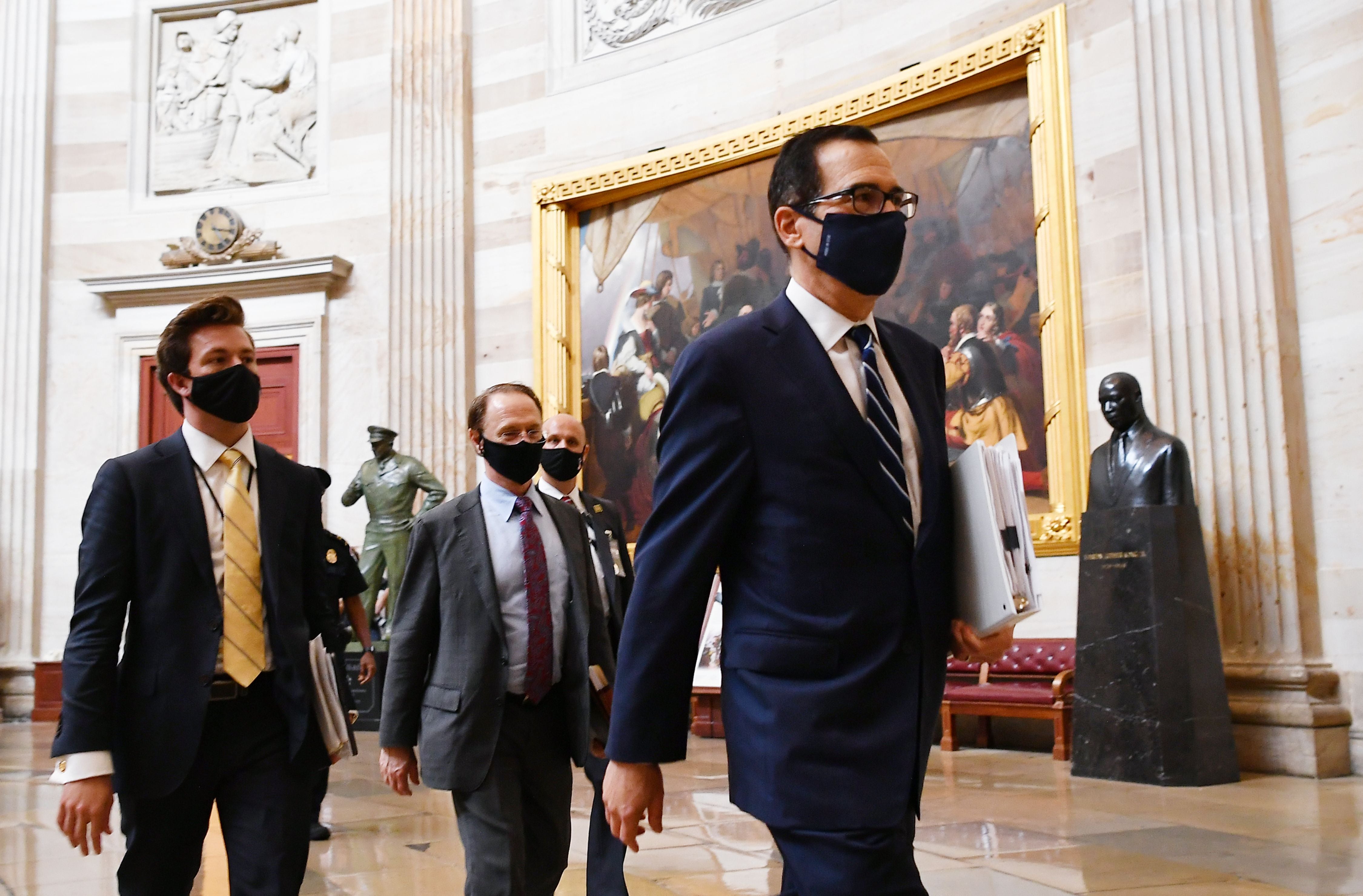US budget deficit spikes to record $3.1 trillion as coronavirus pandemic fuels massive debt increase
Triple 2019 figure and double previous record set in 2009

The US budget deficit has hit an all-time record of $3.132 trillion during the 2020 fiscal year, the Treasury announced.
In just a year, the figure has tripled due to spending to help support the economy in response to the coronavirus pandemic.
The deficit is now more than double the previous record of $1.416 trillion reached in fiscal year 2009 at the height of the global financial crisis.
Fiscal year 2020 ended on 30 September. At the beginning of the year, the US Treasury forecast a $1 trillion deficit, but when coronavirus lockdowns began to be enforced in March, it was acknowledged that the figure was no longer realistic.
The deficit is the amount of spending the government does beyond total tax revenue. In 2020 the government brought in $3.42 trillion in revenue, but spent $6.552 trillion, up from $4.447 trillion in 2019. Tax revenue was only slightly down from 2019.
Much of the increase is down to the $3 trillion in spending programs approved by Congress in the spring to stop the economy from falling deeper and deeper into recrssion and help the millions of newly unemployed.
Treasury secretary Steve Mnuchin and House Speaker Nancy Pelosi are currently locked in negotiations regarding another round of stimulus to breathe life into an economic recovering that appears to be stalling.
A new round of stimulus payments and programs could add $2 trillion to the 2021 deficit just six weeks into the new fiscal year.
However, many economists agree that the assistance is vital to stop millions falling into poverty as companies continue to layoff workers. While unemployment fell from a peak of 14.7 per cent in April to just under eight per cent in September, any further decrease appears to have stalled.
Following the 2008 global financial crisis and economic downturn, there were fierce budget battles to reduce the size of the deficit between the Obama White House and conservatives in Congress. By 2015 it was down to $439bn or 2.5 per cent of the economy which is below average (2.8 per cent) and was the smallest since pre-crisis levels.
The government traditionally runs a deficit and finances it by issuing debt — currently relatively inexpensive given low interest rates.
Even before the pandemic, debt totals had already risen significantly during the Trump administration, despite a campaign promise by Donald Trump to eliminate government debt in eight years.
When the president entered office the debt stood at $14.4 trillion. It is now approximately $21 trillion.
Only in four years, from 1998 to 2001 during the Clinton administration, has the US government run a surplus. This is attributed to a booming economy, higher taxes on the rich from 1993 onwards, defence spending restraint, and increased capital gains tax revenue through a stock market bubble.
Join our commenting forum
Join thought-provoking conversations, follow other Independent readers and see their replies
Comments



Bookmark popover
Removed from bookmarks